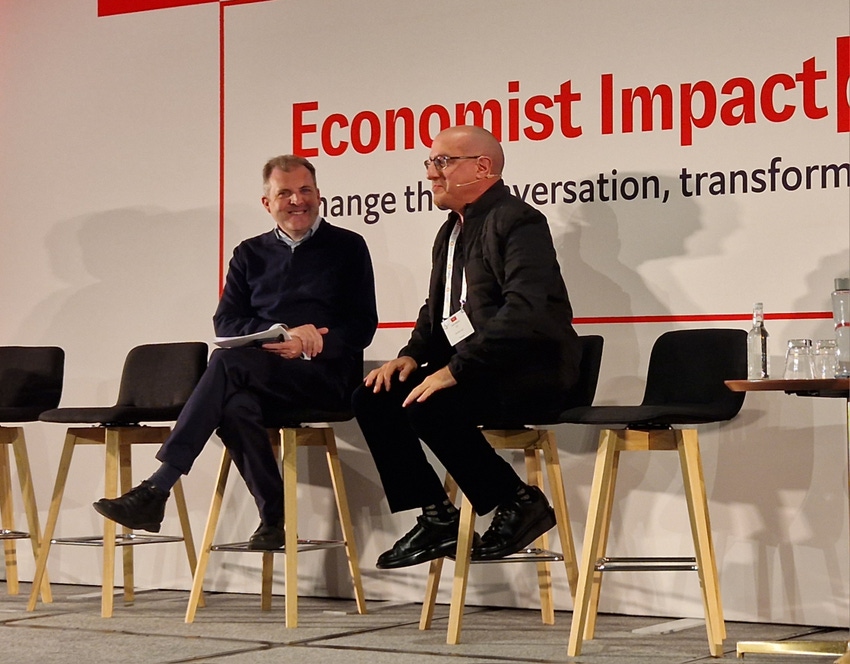
Connects decision-makers and solutions creators to what's next in quantum computing
Sandbox CEO Jack Hidary says quantum could enable transformational change
May 17, 2023

The technology sector is years behind in transforming the technologies that could play a key role in reducing the effects of climate change, but quantum computing could make a difference, according to Sandbox CEO Jack Hidary.
Addressing the Economist Impact Commercializing Quantum conference, Hidary said while the tech sector had done a good job in terms of data, he would award it a failing grade in terms of global impact for good.
“In terms of how we generate molecules and medicines, we're still using the techniques of 10 or 20 years ago, which is why it still takes 13 to 14 years and $2 billion to make one medicine that may have an 80% failure rate in clinical phase trials,” he said.
“When it comes to material science such as replacing plastics, new kinds of solar panels and battery chemistry, these are issues of atoms, not bits, and we as the tech sector have not given sufficient toolsets to these industries to innovate in a massive way. So I hope this is the beginning of a new era of the tech sector, bits and atoms. And that's where quantum can play a major role.”
Hidary explained that simulation, using quantum techniques on current graphics processing unit (GPU) chips, is an enormous current opportunity for materials design. As quantum processing units (QPU) evolve, these problems will increasingly be solved by a GPU/QPU mesh.
Quantum sensing is another important application for climate change. Hidary gave the example of sending remotely operated vessels (ROVs) to map the acidity of the ocean over a particular area. However, in the depths of the ocean, there is no GPS.
“The British Antarctic Survey has two ROVs underwater that look like torpedoes but unfortunately both of them are broken right now because they didn't have great navigation – they both hit sea walls,” he said. “However, we can empower these underwater ROVs with quantum navigation, using the magnetic lines of the Earth to sense our oceans in a much better way, which is critical to understanding the impact of climate change.”
Improved battery technology is essential for ensuring the more widespread use of sustainable energy. AI has only limited applicability to inform future designs as there is limited data to use as few prototypes of possible battery technologies have been produced to date. Quantum could provide a solution.
“We have to work from first principles, we have to use the mathematics of quantum itself because that interaction between ions and atoms in the battery is a quantum interaction that's not governed by the laws of Newton, but by the laws of quantum,” Hidary said.
“Once we build these synthetic datasets of electron configurations, we can then apply machine learning to that to sift through and optimize which of these electron configurations would be optimal. So there's a role for AI to play after you have created your synthetic data set from scratch using mathematics first principles.”
At the renewable energy generation end, quantum could help develop the next generation of solar panels.
“Today's solar panels are made from mono- or polycrystalline silicon and those go into those rigid, rather heavy panels that you have to pop onto the roof or in the field,” Hidary said. “However, there have been alternative chemistries proposed in the literature and labs. One of these is perovskites, which are made of calcium and titanium and produce a photoelectric effect just like silicon.”
The photovoltaic effect in perovskites has grown from 3% efficiency to more than 27% efficiency in the last seven years. However, practical solar panels require a 25-year lifespan and current technologies are unstable and degrade after a year or two. Some also contain lead or other toxic materials.
“If we physically tried in the lab to concoct billions and millions of prototypes, we'd be here for thousands of years,” said Hidary. “Rather, we can use simulation in a digital twin format to simulate the prospective chemistry for a perovskite that would have durability even under the sun for 25 years.
“They have a wonderful attribute that you can make them very flexible so they can be rolled and transported easily and they're very light. They would probably have a 10x impact on the use of solar. That's a question of quantum simulation, and we hope that more and more labs will start using these tools on GPUs now and one day QPUs will be out there.”
You May Also Like




